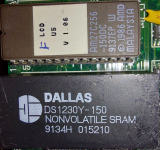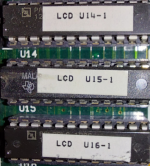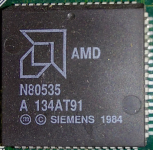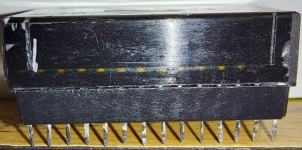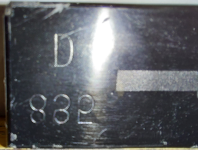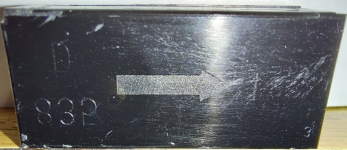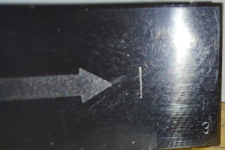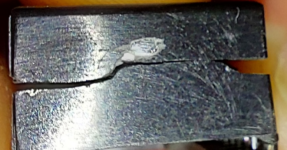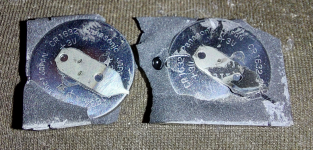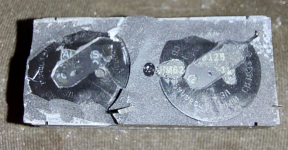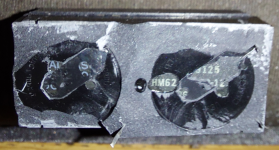No dremel needed for the above chip after all, thankfully. Was able to chip out, expose, and lift the fourth batter pin with the razor-blade.
But I did use my dremel to disassemble this Dallas Smartsocket (with its surface-mounted DIP DS1213 chip) and extract its two batteries.
I'd already previously removed the socket from the top and the pins from the bottom in previous attempts, which didn't actually help.
So no pictures of mine intact, but those can be easily found online, I think.
I first hammered a razor-blade in at each end to start the potting separating from the circuit-board, then I cut the embedded pins along the sides with my dremel and used small screwdrivers to lever the potting away from the board.
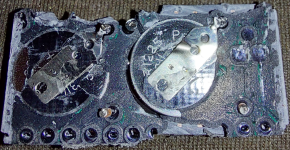
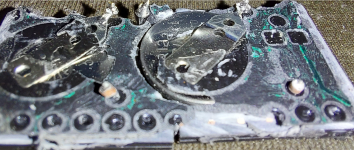

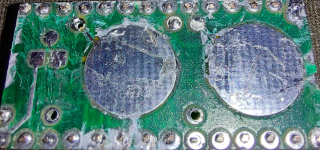
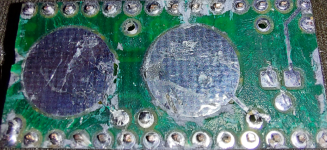
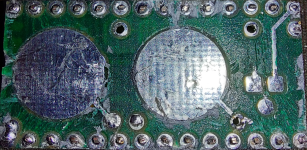
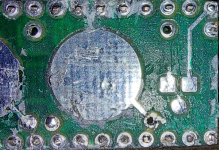
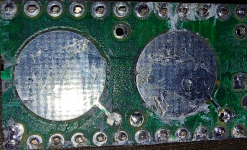
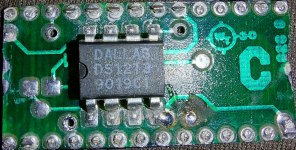
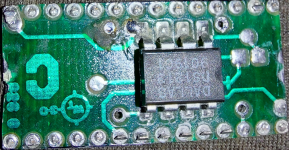
In prying the batteries away from the board I did pull out a couple plated vias, but those points only attached to one side of the board anyhow.
The non-battery connections the eagle-eyed among you might have spotted perplexed me at first.
I had to carefully dissect the epoxy around these tiny pins to trace their paths and eventually figured out that they are redirected pins!
While most of the pins of whatever ram chip you couple with the Smartsocket simply pass straight through, a few of them are routed to the DS1213 and the batteries before returning to the pin exiting the bottom of the Smartsocket into the board you plug it into.
I'll have to replicate these redirections when I attempt to rebuild the board with new pins and a new socket.
But hey, managed to save the board and chip! (helped that the chip was on the top inside the hollow of the socket instead of being potted)
While I think I can rebuild it with what I've documented during disassembly*, I wouldn't say no to a schematic if anyone has one!
*(the pins didn't divert far and went in a straight line to the nearest point on the board, I'm almost certain)
Anyhow, that's all the Dallas modules I have to break down for refurb, so that's it for now!
Until next time, keep on fixing, bodging, hacking, and bringing these old things back to life!

